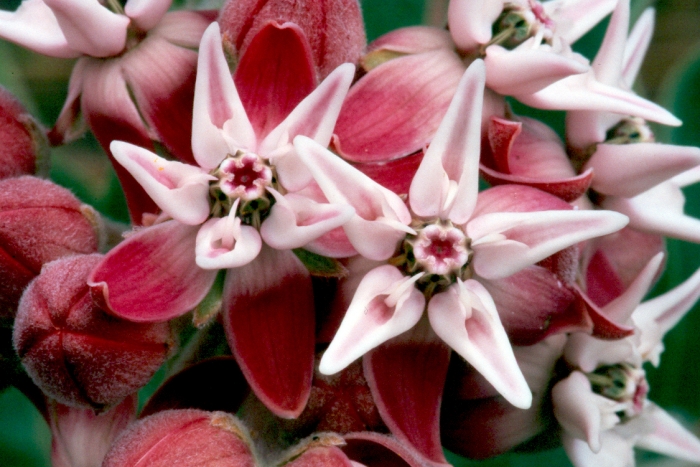Showy Milkweed
(Asclepias speciosa)
Showy Milkweed (Asclepias speciosa)
/
/

Bureau of Land Management Bureau of Land Management
Public domain
Image By:
Bureau of Land Management Bureau of Land Management
Recorded By:
Copyright:
Public domain
Copyright Notice:
Photo by: Bureau of Land Management Bureau of Land Management | License Type: Public domain | License URL: https://creativecommons.org/public-domain/ | Uploader: Flickr upload bot | Publisher: Wikimedia Commons | Title: Asclepias_speciosa.jpg | Notes: User created page with UploadWizard |




























































Estimated Native Range
Summary
Asclepias speciosa, commonly known as Showy Milkweed, is a deciduous perennial herb native to open woodlands, prairies, and riparian areas in the Western and Central United States, as well as Southern Canada. It typically grows to a height of 6 feet and a width of 1-2 feet. Showy Milkweed is characterized by its stout, hairy stems and large, ovate leaves that exude a milky sap when damaged. The plant is renowned for its large, spherical clusters of star-shaped flowers, which range in color from pale pink to pinkish-purple and bloom from May through July. These flowers are highly attractive to pollinators, especially monarch butterflies, which rely on milkweed species as a food source for their larvae.
Showy Milkweed is valued for its ecological role as a host plant for monarch butterflies and its ornamental qualities, including the showy flowers and the subsequent decorative seed pods that form after flowering. It is used in native plant gardens, pollinator gardens, and restoration projects. This species is adaptable to a variety of soil conditions, from well-drained to clay, and prefers full sun but can tolerate partial shade. While it is drought-tolerant once established, moderate watering will support more vigorous growth. Gardeners should be aware that the plant can spread aggressively by rhizomes and self-seeding, potentially becoming weedy. To propagate, cold stratification of seeds is recommended, but care should be taken not to apply mulch too thickly, as it can inhibit germination and seedling emergence.CC BY-SA 4.0
Showy Milkweed is valued for its ecological role as a host plant for monarch butterflies and its ornamental qualities, including the showy flowers and the subsequent decorative seed pods that form after flowering. It is used in native plant gardens, pollinator gardens, and restoration projects. This species is adaptable to a variety of soil conditions, from well-drained to clay, and prefers full sun but can tolerate partial shade. While it is drought-tolerant once established, moderate watering will support more vigorous growth. Gardeners should be aware that the plant can spread aggressively by rhizomes and self-seeding, potentially becoming weedy. To propagate, cold stratification of seeds is recommended, but care should be taken not to apply mulch too thickly, as it can inhibit germination and seedling emergence.CC BY-SA 4.0
Plant Description
- Plant Type:
- Height: 2-5 feet
- Width: 1-1.5 feet
- Growth Rate: Moderate
- Flower Color: Pink, Purple
- Flowering Season: Summer
- Leaf Retention: Deciduous
Growth Requirements
- Sun: Full Sun
- Water: Medium
- Drainage: Fast, Medium, Slow
Common Uses
Bee Garden, Bird Garden, Border Plant, Butterfly Garden, Deer Resistant, Drought Tolerant, Edible*Disclaimer: Easyscape's listed plant edibility is for informational use. Always verify the safety and proper identification of any plant before consumption., Erosion Control, Fire Resistant, Fragrant, Hummingbird Garden, Low Maintenance, Rabbit Resistant, Showy Flowers, Street Planting
Natural Habitat
Native to open woodlands, prairies, and riparian areas
Other Names
Common Names: Belle Asclépiade , Praktsidenört
Scientific Names: Asclepias speciosa , Asclepias longicornis , Asclepias douglasii , Asclepias giffordii
GBIF Accepted Name: Asclepias speciosa Torr.